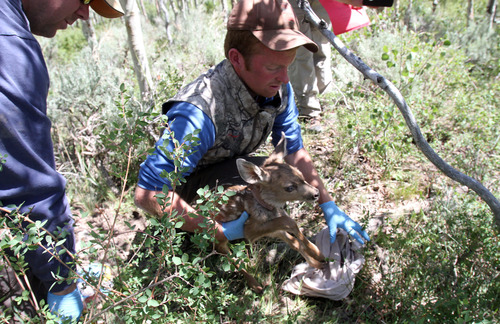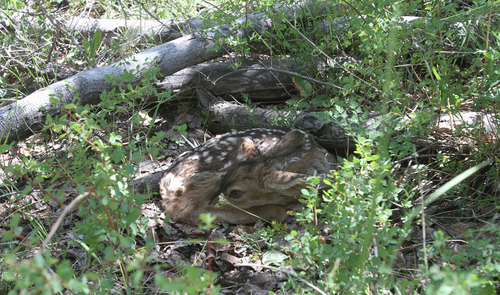This is an archived article that was published on sltrib.com in 2014, and information in the article may be outdated. It is provided only for personal research purposes and may not be reprinted.
Utah is getting $19.7 million from two federal excise taxes few citizens know about.
The U.S. Fish and Wildlife Service will send nearly $1.1 billion to states and territories to fund fish and wildlife conservation and recreation projects based on taxes collected through the Pittman-Robertson Wildlife Restoration and Dingell-Johnson Sport Fish Restoration programs.
"Since 1937 we have relied on these excise tax funds provided by sportsmen to rebuild our fish and wildlife habitats and populations to the incredible levels that are seen today," said Greg Sheehan, director of the Utah Division of Wildlife Resources (DWR). "Without these funds we could not operate our hatcheries and wildlife management areas thus placing our entire wildlife funding model in jeopardy."
The taxes are assessed on items such as sporting firearms, ammunition, archery equipment, fishing equipment and tackle, electric outboard motors and fuel for motorboats and small engines.
The Pittman-Robertson Act came about in 1937 after hunters, anglers, state wildlife agencies and firearms and ammunition manufacturers asked that a 10 percent tax be earmarked for wildlife restoration. The Dingell-Johnson Act of 1950 placed a 10 percent tax on sport fishing tackle, and a 3 percent tax on fish finders, electric trolling motors, yachts and pleasure craft and motorboat and small engine fuel taxes.
Money from the Dingell-Johnson Act is used for management and restoration of fish, aquatic education, wetlands restoration, boat safety and clean vessel sanitation devices.
"Anyone who enjoys our nation's outdoor heritage should thank hunters, anglers, recreational boaters and target shooters," Dan Ashe, director of the U.S. Fish and Wildlife Service, said in prepared statement. "Through the Wildlife and Sport Fish Restoration Program, these individuals have created a 75-year legacy for conservation of critical wildlife habitat and improved access to the outdoors for everyone."
In Utah, monies from the Dingell-Johnson program help fund projects such as the Flaming Gorge burbot study, which examined the effects of wildfire on fish population, a study of the Weber River dynamics of native trout, angler access points, hatcheries, community fisheries and shared research projects with Utah State and Brigham Young universities.
Pittman-Robertson monies are used to conduct big game population surveys and transplants, a mule deer doe and fawn survival study, moose research and planned shooting range improvements at the Lee Kay Hunter Education Center.
Department of Interior officials said the $760 million delivered from the Pittman-Robertson program for 2014 is a record. There is currently a high demand for firearms and ammunition.
The Dingell-Johnson program is handing out $325 million, which is down from 2013 due to lower fishing equipment sales.
"At the Division we work carefully to ensure that we can adjust funding levels and mixes to accommodate the often fluctuating levels of these federal funds," Sheehan said. "I hope that in the future we can continue to educate our public about the critical need for these funds and how our sportsmen are willing to pay for wildlife conservation in the state."
Twiter: @BrettPrettyman





